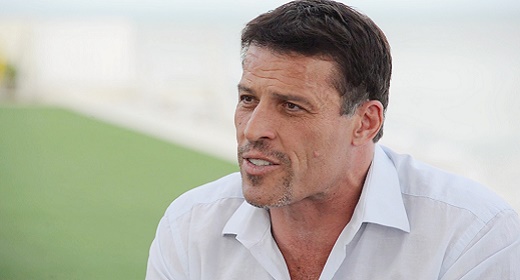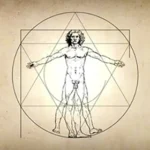Sharon Salzberg explains how to practice basic breath meditation…
This classic meditation practice is designed to deepen concentration by teaching us to focus on the in-breath and out-breath.
Sit comfortably on a cushion or a chair. Keep your back erect, but without straining or overarching. (If you can’t sit, lie on your back, on a yoga mat or folded blanket, with your arms at your sides.)
Close your eyes, if you’re comfortable with that. If not, gaze gently a few feet in front of you. Aim for a state of alert relaxation.
Deliberately take three or four deep breaths, feeling the air as it enters your nostrils, fills your chest and abdomen, and flows out again. Then let your breathing settle into its natural rhythm, without forcing or controlling it. Just feel the breath as it happens, without trying to change it or improve it. You’re breathing anyway. All you have to do is feel it.
Notice where you feel your breath most vividly. Perhaps it’s predominant at the nostrils, perhaps at the chest or abdomen. Then rest your attention lightly—as lightly as a butterfly rests on a flower—on just that area.
Become aware of sensations there. If you’re focusing on the breath at the nostrils, for example, you may experience tingling, vibration, or warmth, itchiness. You may observe that the breath is cooler when it comes in through the nostrils and warmer when it goes out. If you’re focusing on the breath at the abdomen, you may feel movement, pressure, stretching, release. You don’t need to name these sensations—simply feel them.
Let your attention rest on the feeling of the natural breath, one breath at a time. (Notice how often the word “rest” comes up in this instruction? This is a very restful practice.) You don’t need to change it, force it, or “do it right”: just feel it. You don’t need to make the breath deeper or longer or different from the way it is. Simply be aware of it, one breath at a time.
You may find that the rhythm of your breathing changes. Just allow it to be however it is. Sometimes people get a little self-conscious, almost panicky, about watching themselves breathe—they start hyperventilating a little, or holding their breath without fully realizing what they’re doing. If that happens, just breathe more gently. To help support your awareness of the breath, you might want to experiment with silently saying to yourself “in” with each inhalation and “out” with each exhalation, or perhaps “rising” and “falling.” But make this mental note very quietly within, so that you don’t disrupt your concentration on the sensations of the breath.
Connecting to your breath when thoughts or images arise is like spotting a friend in a crowd: You don’t have to shove everyone else aside or order them to go away; you just direct your attention, your enthusiasm, your interest toward your friend.
Many distractions will arise—thoughts, images, emotions, aches, pains, plans. Just be with your breath and let them go. You don’t need to chase after them, you don’t need to hang onto them, you don’t need to analyze them. You’re just breathing. Connecting to your breath when thoughts or images arise is like spotting a friend in a crowd: You don’t have to shove everyone else aside or order them to go away; you just direct your attention, your enthusiasm, your interest toward your friend. “Oh,” you think, “there’s my friend in that crowd. Oh, there’s my breath, among those thoughts and feelings and sensations.” If distractions arise that are strong enough to take your attention away from the feeling of the breath—physical sensations, emotions, memories, plans, an incredible fantasy, a pressing list of chores, whatever it might be—or if you find that you’ve dozed off, don’t be concerned. See if you can let go of any distractions and return your attention to the feeling of the breath.
Once you’ve noticed whatever has captured your attention, you don’t have to do anything about it. Just be aware of it without adding anything to it—without tacking on judgment (“I fell asleep! What an idiot!”); without interpretation (“I’m terrible at meditation!”); without comparisons (“Probably everyone can stay with the breath longer than I can!” or “I should be thinking better thoughts!”); without projections into the future (“What if this thought irritates me so much I can’t get back to concentrating on my breath? I’m going to be annoyed for the rest of my life! I’m never going to learn how to meditate!”).
You don’t have to get mad at yourself for having a thought. You don’t have to evaluate its content, just acknowledge it. You’re not elaborating on the thought or feeling. You’re not judging it. You’re neither struggling against it nor falling into its embrace and getting swept away by it. When you notice your mind is not on your breath, notice what is on your mind. And then, no matter what it is, let go of it. Come back to focusing on your nostrils or your abdomen or wherever you feel your breath.
Rather than tell yourself you’re weak or undisciplined, or give up in frustration, simply let go and begin again.
The moment you realize you’ve been distracted is the magic moment. It’s a chance to be really different, to try a new response. Rather than tell yourself you’re weak or undisciplined, or give up in frustration, simply let go and begin again. In fact, instead of chastising yourself, you might thank yourself for recognizing that you’ve been distracted, and for returning to your breath. This act of beginning again is the essential art of the meditation practice.
Every time you find yourself speculating about the future, replaying the past, or getting wrapped up in self-criticism, shepherd your attention back to the actual sensations of the breath. If it helps restore concentration, mentally say “in” and “out” with each breath, as suggested earlier.) Our practice is to let go gently and return to focusing on the breath. Note the word “gently.” We gently acknowledge and release distractions, and gently forgive ourselves for having wandered. With great kindness to ourselves, we once more return our attention to the breath.
If you have to let go of distractions and begin again thousands of times, fine. That’s not a roadblock to the practice—that is the practice. That’s life: starting over, one breath at a time.
If you feel sleepy, sit up straighter, open your eyes if they’re closed, take a few deep breaths, and then return to breathing naturally. You don’t need to control the breath or make it different from the way it is. Simply be with it. Feel the beginning of the in-breath and the end of it; the beginning of the out-breath and the end of it. Feel the little pause at the beginning and end of each breath.
Continue following your breath—and starting over when you’re distracted—until you’ve come to the end of the time period you’ve set aside for meditation. When you’re ready, open your eyes or lift your gaze.
Try to bring some of the qualities of concentration you just experienced—presence, calm observation, willingness to start over, and gentleness—to the next activity that you perform at home, at work, among friends, or among strangers.









































